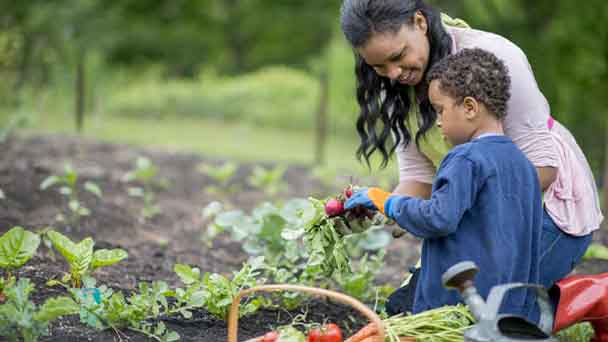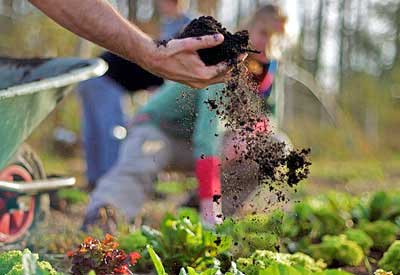What should I add to my garden soil in the fall?
Written by Joy
Sep 29 2020

When caring for lawns or turf, garden plants, and perennial crops, autumn is an important time to fertilize. This seems contrary to what garden enthusiasts think, because most plants stop growing in the fall. But in fact, under the soil, autumn is the busiest time of the year. Many plants have very active root growth in autumn. During this season, bulbs, perennials, trees, shrubs and grasses begin to store nutrients, which will be used in the spring. So what should i add to my garden soil in the fall?
For the most effective planting after winter, fall is the time to plan and add to your garden soil in advance to fertilize the soil. You'd better add nutrients to the soil in autumn to give the soil time to decompose the nutrients in winter and early spring, so that the plants can get the nutrients needed for growth when the ground begins to thaw.
Lawn use: Before planting or laying turf, apply about 1-2 kg of organic fertilizer per square meter in combination with soil preparation. After fertilization, the fertilizer is mixed with the soil, which can directly sow or lay the turf. The established lawn can be used in spring and autumn with Lvkang RHP compost-gardening soil, 150-200 kg per mu of lawn can be sprayed and watered after fertilization, which can promote fertilizer efficiency.
Potted use: Lvkang RHP compost-gardening soil and soil use ratio can be very loose, use amount is 20%-80%.
For the most effective planting after winter, fall is the time to plan and add to your garden soil in advance to fertilize the soil. You'd better add nutrients to the soil in autumn to give the soil time to decompose the nutrients in winter and early spring, so that the plants can get the nutrients needed for growth when the ground begins to thaw.

Lvkang RHP compost
In order to quickly turn green lawns and prepare the soil for gardening, we recommend freezing the ground (using Lvkang RHP compost at the end of autumn before).Lawn use: Before planting or laying turf, apply about 1-2 kg of organic fertilizer per square meter in combination with soil preparation. After fertilization, the fertilizer is mixed with the soil, which can directly sow or lay the turf. The established lawn can be used in spring and autumn with Lvkang RHP compost-gardening soil, 150-200 kg per mu of lawn can be sprayed and watered after fertilization, which can promote fertilizer efficiency.
Potted use: Lvkang RHP compost-gardening soil and soil use ratio can be very loose, use amount is 20%-80%.
Fertilizing potted flowers
Fertilization for potted flowers can be divided into pot replacement and daily topdressing. Potted flowers are generally changed every 1-2 years, and the potted soil is usually loose, fertile and well drained. When changing pots, you’d better add nutrient soil with bio-organic fertilizer to provide sufficient nutrients and growth space for the growth of flowers. You'd better not apply any fertilizer within 30 days after changing pots in order to ensure the normal growth of flowers and plants. After the slow seedling, you can apply bio-organic fertilizer once a month, bury the fertilizer or loosen the soil after spreading, so that the pot soil and the fertilizer are evenly mixed, and the delicate flowers should avoid the contact between the fertilizer and the rhizomes, and then you should water enough. The amount of fertilization can be adjusted according to plant growth and weather conditions. For example, if the leaves are thin and light green in cloudy days, the fertilization amount can be appropriately larger, and the leaves are thick and thick and green in hot weather, and the fertilization amount can be smaller.Latest Updated
- Benefits of Bugleweed - 7 Science-backed Health Benefits
- Bugleweed Dangers & Side Effects - Is It Poisonous?
- How to Plant Evergreen Trees - What You Should Know
- When to Plant Evergreens - Grow Guide for Evergreen Trees
- 12 Wonderful Evergreen Shrubs for Your Garden
- 12 Popular Evergreen Plants with Pictures for Beginners
- When And How To Prune A Lilac Bush Like a Pro
- How to Grow & Care for Lilac Vine (Hardenbergia Violacea)
- Japanese Lilac Tree (Syringa Reticulata) Care & Propagation Guide
- Shumard Oak Pros and Cons - What to Know
Popular Articles
- Winter maintenance of Antirrhinum Majus
- How to Grow Terminalia Mantaly Tree
- How to Grow and Care for Crossostephium Chinense
- How to grow Antirrhinum Majus in spring
- Peristeria Elata (Dove Orchid) Profile: Info & Care Guide
- Underwatered Snake Plant (Sansevieria Trifasciata) - Signs And How To Fix
- How to Care for Brazilian Jasmine Plant (Mandevilla Sanderi)
- How to Grow & Care for Graptopetalum Purple Delight in Summer
- Rosa Chinensis (China Rose): Plant Growing & Care Tips
- How to Care for Baby Sun Rose (Aptenia Cordifolia)